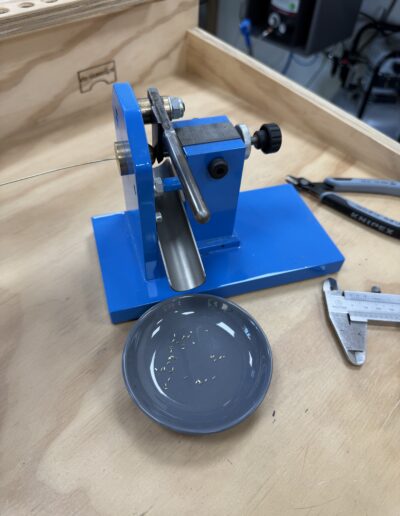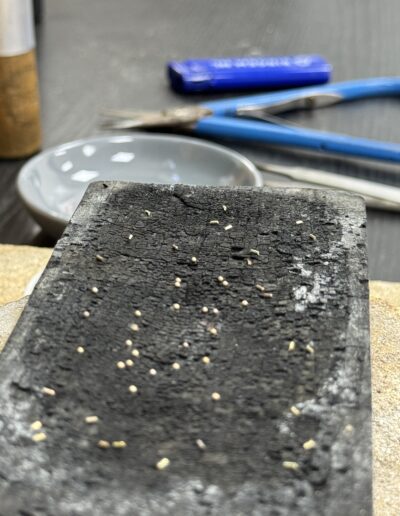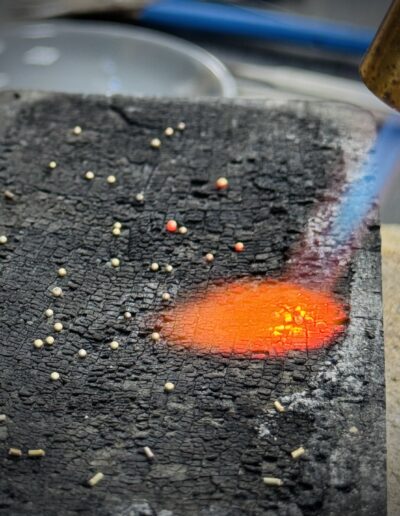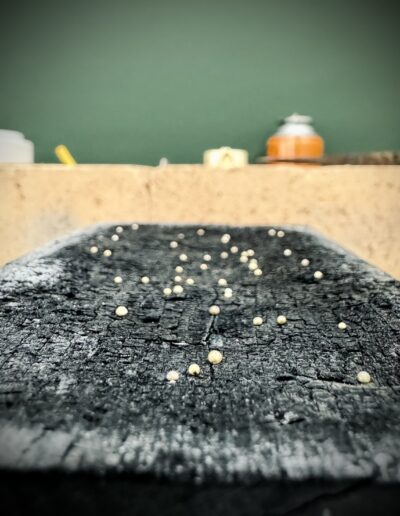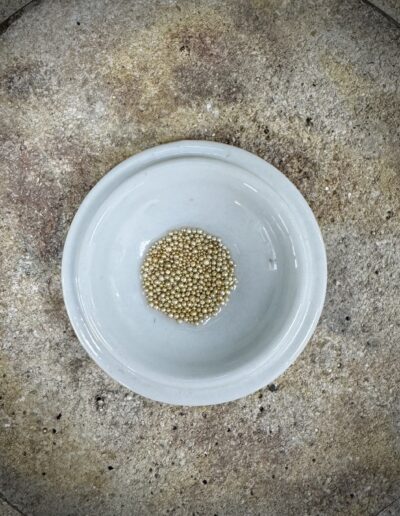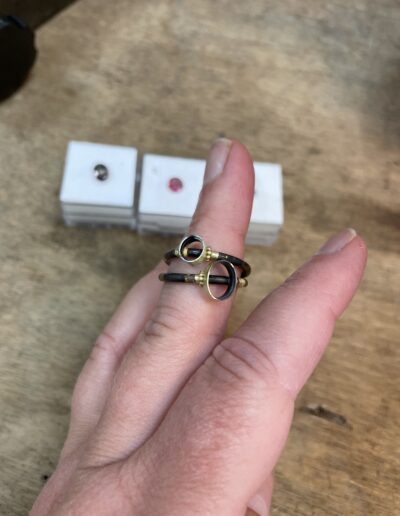Granules – my golden handwriting
In my studio, I often hear the question come up, “What are those, those dots?”, “Are they pellets?”, and my personal favorite, “It looks like disco dip!” And honestly? That always makes me smile a little. Because those little spheres – granules, in other words – are now inseparable from my work. But what are they really? And where did this technique come from?
What are granules?
Granules are small, round balls of precious metal. They have been used in jewellery for thousands of years – particularly in Etruscan, Roman and Georgian goldsmithing. The original technique is called granulation: a refined craft in which beads are fused to the surface of a piece of jewelry, often in graceful and symmetrical patterns.
The oldest examples are literally museum pieces. Consider tiaras, pendants and fibulas from ancient Georgia or the Mediterranean, where the granules are arranged in mathematical precision on rows and circles. Dazzlingly beautiful – and impressive in terms of technology.
How are granules made?
The traditional way of making granules is quite time-consuming. Small pieces of precious metal (often gold) are heated on a piece of charcoal or in a special furnace until they melt and become naturally spherical due to surface tension. Then they are sorted by size – often with a sieve or by hand – and applied one by one to the jewellery.
In classical granulation, the spheres are held in place with a mixture of organic binder (such as gum arabic) and copper salts. The piece is then heated, causing the beads to just adhere to the surface – with no visible solder.
From exhibition to own signature
My love for granules began in 2010, at the “Gold from Georgia” exhibition at the Drents Museum. I was then a beginning goldsmith, still fully searching for my own style. Colored gemstones already played a starring role in my work – there was never any doubt about that – but I was still missing something that would make my work truly recognizable and individual.
That exhibition touched something in me: the power of something so small, the subtlety of repetition, and especially the way something seemingly simple, like a ball of gold, can have so much eloquence. That’s where my search began. Not for perfection or symmetry, but for something that suited my way of working. And so I started experimenting with granules – but in my own way.
Controlled chaos
What distinguishes my work from the classical technique is that I do solder the granules solid and do not use the traditional way of fusing. Moreover, I consciously choose NOT to have ordered patterns. No mathematical rows or circles, but a kind of “controlled chaos.
The granules in my work seem randomly placed – but they are not. Each sphere sits exactly where it should. Sometimes as a counterpoint, sometimes as a point of tension, sometimes as a small detail that you don’t discover until the second viewing.
That play between structure and looseness is what I value so much. It makes my jewellery playful and at the same time recognizable. When people say, “Oh yes, this is really a Kobak,” it’s often because of those polka dots. My globules.
A time without bulbs?
And yet … after years of working with granules, there came a time when I got a little tired of them. The challenge seemed gone. It became predictable – and that made me restless. And if I value anything, it’s that as a goldsmith and designer you always have to keep evolving, stay curious.
I wanted to explore how to innovate its application. That led me to a totally different idea: what if I don’t use the granules on the outside? Thus was born the first design for the Inside Out collection – with granules on the inside of the design, as a surprise to the person wearing the jewelry.
That experimentation eventually brought me back to the essence of my style. For what I thought I was leaving behind me proved once again to be inseparable from my work. It inspired new ideas, such as the Summer Rose design, in which the familiar granules gave way to tiny diamonds. Not to abandon technique, but to explore what happens when you use the same construction, but with a different material.
The diamonds give the jewelry a completely different effect: surprising, subtly sparkling, but with that same layering and movement that I appreciate so much in granules. And that’s what I’m experimenting with now – fine-tuning what I call my signature, without ever stopping.
More than decoration
For me, granules are now more than decoration. They have become a manuscript. I use them in rings, earrings and pendants – sometimes subtle, sometimes just pronounced. And whether it’s 14kt or 18kt, gold or silver: granules always add something. Something tangible. Something of its own.
And perhaps that is what I love most about this technique: that no matter how old it is, it can always be reshaped.
Would you like to know more about my methods or have a piece of jewelry made with granules? If so, please feel free to contact me through my contact page.
Love,
Sarah

